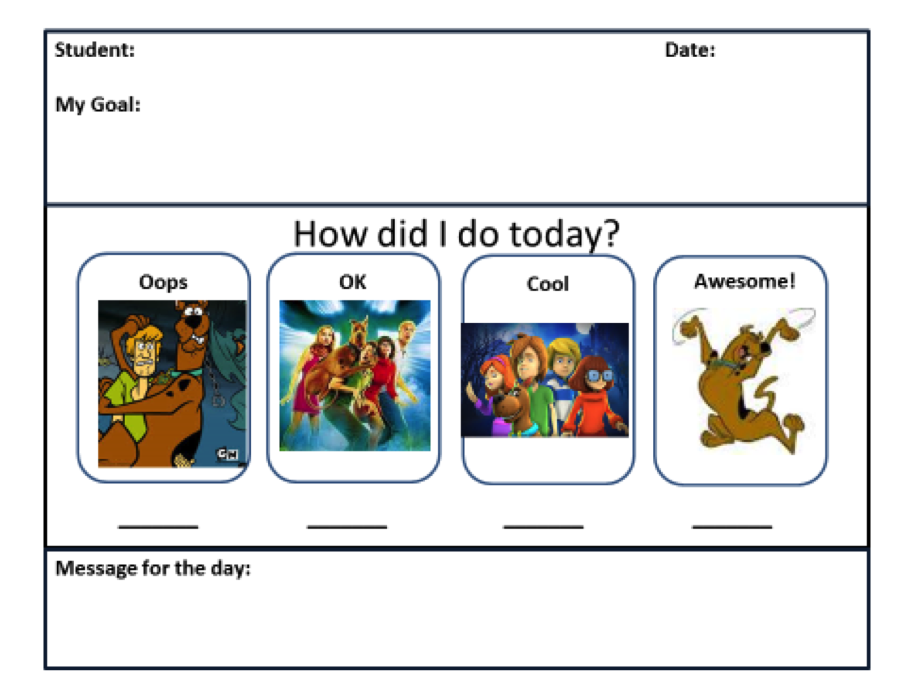Self-management techniques have been found to be more effective in managing student behavior than teacher-mediated interventions (Stage & Quiroz, 1997; Fitzpatrick & Knowlton, 2009). When self-management strategies are linked to functionally equivalent behavioral interventions, students increased the amount of time on-task, demonstrated more appropriate social behaviors, and completed more assignments.
Student Self-Management Interventions DESCRIPTION
- Self-monitoring: Students both observe and record targeted behaviors.
- Self-evaluation: A student compares his or her performance to established criteria.
- Self-instruction: Student-directed behavior is guided through the use of self-statements.
- Goal-setting: Students select a goal and create personal guidelines for commitment, and progress toward that goal.
When possible, incorporate the student’s interest as in the following example.

The blanks may be used to link the self-evaluation tool to specific criteria. For instance, if the goal is to complete academic tasks, then “Awesome” might say complete ALL assignments or have a specific number of tasks. Under “Cool,” it might say complete MOST assignments or a specific number, and so on.
Self-management interventions are easy to design, simple to use, potentially portable, and practical for teachers. It has been asserted that self-management is a pivotal skill that can generalize behaviors, support autonomy, and produce behavioral improvements across various contexts for children with ASD (Koegel et al., 1999).
Based on this idea and current literature presenting self-management as a viable procedure, practical use of self-management procedures is recommended for fostering independence and inclusion of people with ASD
Supporting Research:
Self-management procedures were successful in increasing target behaviors for students with ASD. Self-management procedures increased target behaviors for students with ASD. A total of 16 research studies met the original research criteria. All 35 participants using a version of self-management improved and maintained targeted skills. Four of the studies formally collected social validity data using questionnaires and rating forms.
The participant in Hughes et al. (2002) made noticeable significant gains in saying “thank you” to customers using self-management as perceived by a peer and teacher. Both peer and teacher also confirmed that they enjoyed being around the student more after the positive effects of self-management. Kern et al. (1997) reported that school staff perceived self-management as easy to implement and effective in a short duration of time while not being distracting to students.
Self-Management Procedures: A Comparison across the Autism Spectrum
Candice M. Southall and David L. Gast
The University of Georgia
By Lisa Rogers
The Education (K-12) Blogs and Special Ed Q & A are written and maintained weekly by Lisa Rogers with Educating Diverse Learners. Lisa received her M.A. in Special Education with an endorsement in the area of individuals with severe disabilities. Mrs. Rogers has also created products that have been used throughout the state of Texas for training purposes. Through the Association for Texas Professional Educators [ATPE], Ms. Rogers has produced an online course that targets the importance of visual strategies for student with autism spectrum disorders and just released her highly anticipated book titled: Visual Supports for Visual Thinkers.



Wow! That’s a really neat anewsr!